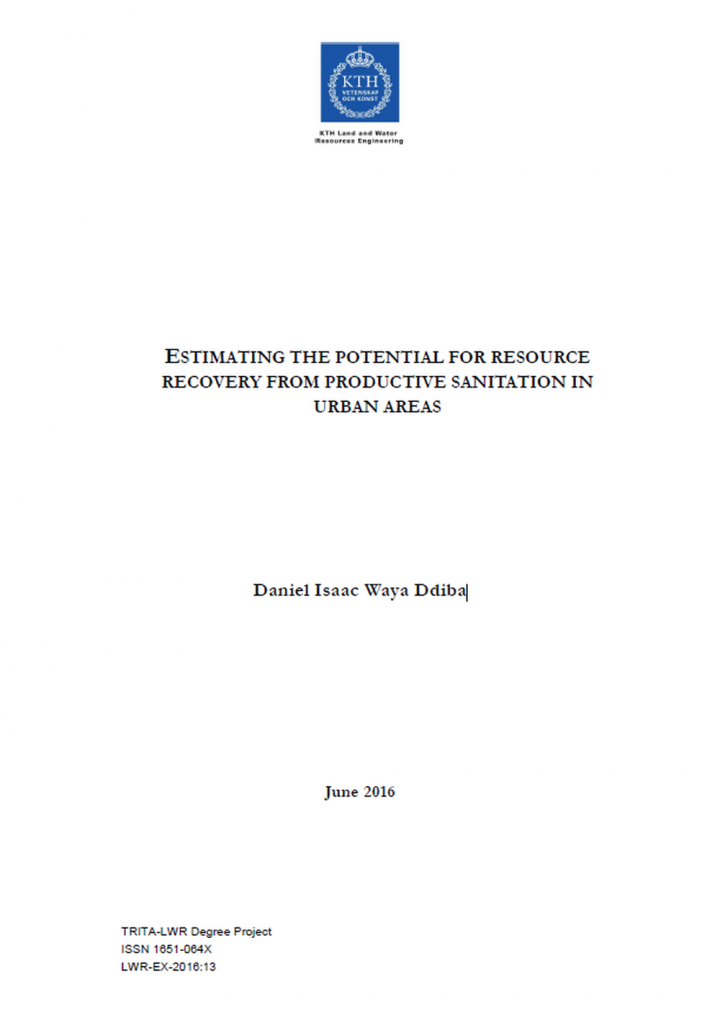Estimating the potential for resource recovery from productive sanitation in urban areas Ddiba, I.W.D. (2016)
To-date, sanitation and waste management has mainly been approached from a public and environmental health perspective and this implies that excreta and other organic waste streams are seen not only as a hazard to quickly get rid of but also as only a very costly menace to manage. However, looking at sanitary and other urban organic waste streams from a resource recovery perspective provides an avenue for solutions with multiple co-benefits. Revenues from reuse products can act as an incentive for improving sanitation and waste management infrastructure while also covering part or all of the investment and operation costs for the same. Until now, estimating the potential for resource recovery from sanitation systems and technologies has been largely done on a case by case basis according to project or geography with no standardized universal tools or methodologies being used across the world. This study aimed at developing a generic model for the rapid quantification of the resource recovery potential of organic waste streams in urban areas.
To develop the model, the mathematical relationships between major waste stream characterization parameters and the amounts of reuse products derived from treatment processes, were obtained from published literature and used to formulate equations which were designed into functions in Excel spreadsheets. Testing with waste stream flows and characterization data from Kampala (for faecal sludge, sewage sludge and organic municipal solid waste) showed that the three waste streams could altogether yield; up to 361,200 Nm3 of biogas (which could replace the amount of firewood used by 824,000 people in the city daily) or 752 tonnes of solid combustion fuel (which could replace the amount of firewood used by 1,108,700 people in the city daily) or 198 tonnes of Black Soldier Fly larvae (which could replace 134 tonnes of dry fish per day, currently one of the major animal protein feed ingredient) or 909 tonnes of compost fertilizer (with an amount of nutrients enough to substitute for two tonnes of urea), per day. The results from this model could therefore be a simple way to provide initial decision support towards planning for resource-oriented waste management systems by urban authorities, without the burden of having to do full scale feasibility studies. By highlighting the resource potential in urban waste streams, the model could also provide an incentive for integrated management of the various urban waste streams with a resource recovery and water energy-food nexus perspective.
Bibliographic information
Ddiba, I.W.D. (2016). Estimating the potential for resource recovery from productive sanitation in urban areas KTH Royal Institute of Technology
Filter / Tags
Faeces or faecal sludgeUrban (entire city)EnglishEnergy: biogasFertiliserProtein for animal food
Downloads
Estimating the potential for resource recovery from productive sanitation in urban areas
Type: application/pdf
Size: 2.16 MB

